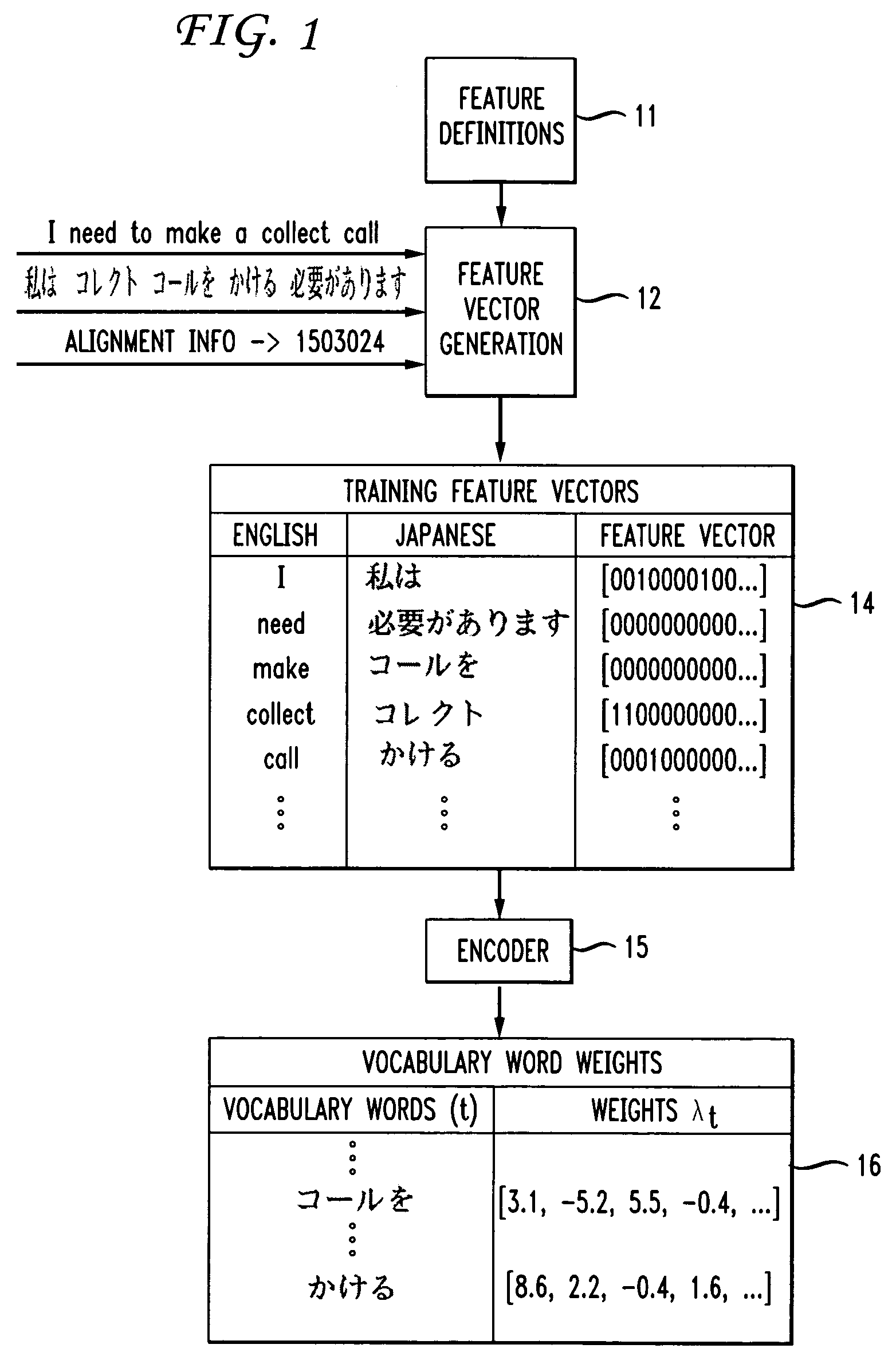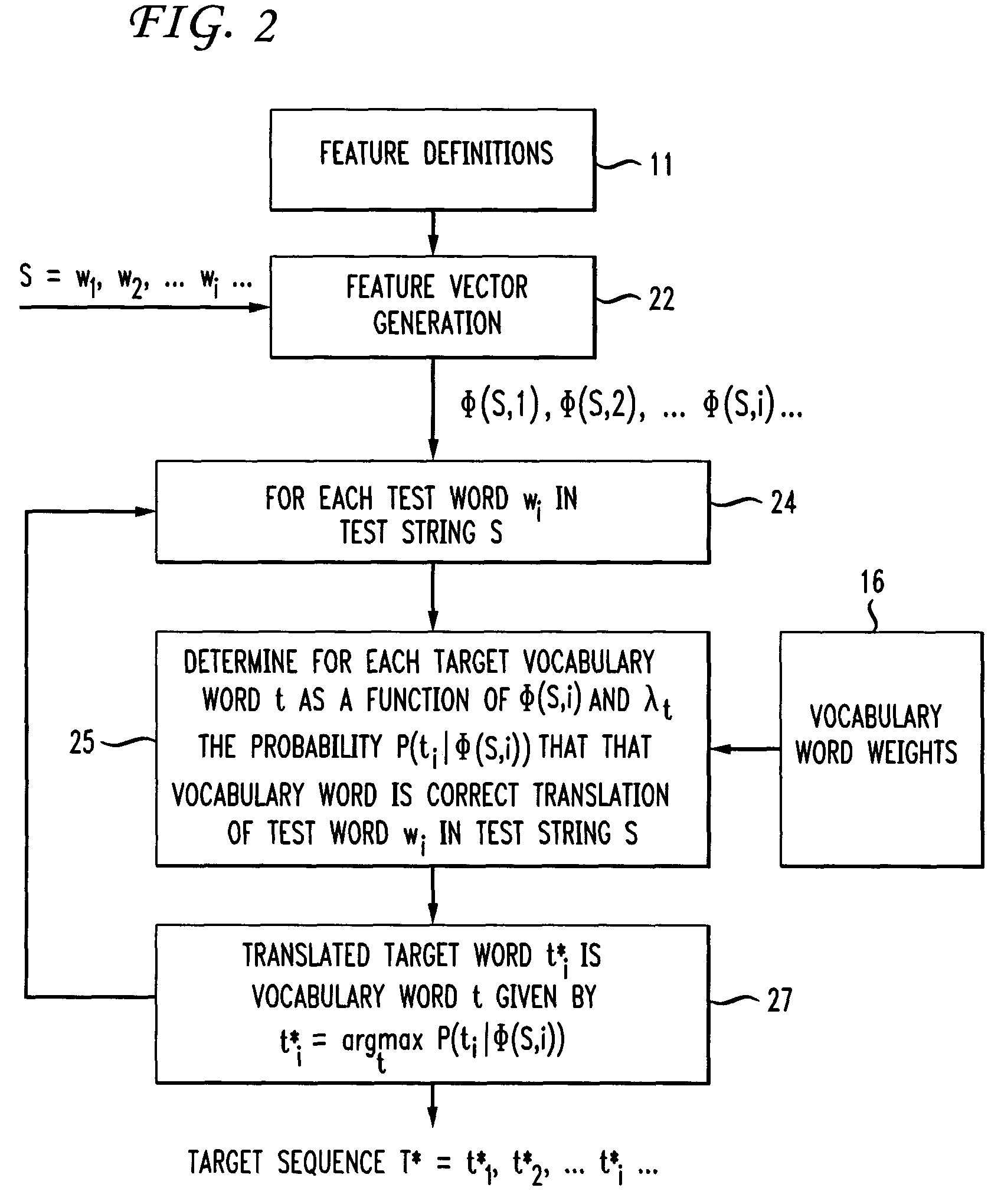Sequence classification for machine translation
a machine translation and sequence technology, applied in the field of sequence classification, can solve the problems of insufficient independence assumption, excessive computational requirements for training models, and insufficient independence assumption, in fact incorrect assumptions
- Summary
- Abstract
- Description
- Claims
- Application Information
AI Technical Summary
Benefits of technology
Problems solved by technology
Method used
Image
Examples
Embodiment Construction
Overview Description
[0019]FIGS. 1 and 2 are respective conceptual block diagrams of discriminative training and translating processes.
[0020]Illustratively the disclosed processes enable the translation of the words of a word sequence, or sentence, in a source natural language into corresponding words of a target natural language. The source and natural languages are illustratively English and Japanese, respectively.
[0021]FIG. 1, more particularly, represents the training phase of the disclosed process in which training sentences in English and the corresponding sentences in Japanese are used in a discriminative training process to develop a set of weights for each of the Japanese words. These weights are then used in the process of FIG. 2 to carry out the aforementioned translation.
[0022]The training process depicted in FIG. 1 is repeated for a large number of training sentences. By way of example, the processing of a single training sentence is depicted. Three pieces of information...
PUM
 Login to View More
Login to View More Abstract
Description
Claims
Application Information
 Login to View More
Login to View More - R&D
- Intellectual Property
- Life Sciences
- Materials
- Tech Scout
- Unparalleled Data Quality
- Higher Quality Content
- 60% Fewer Hallucinations
Browse by: Latest US Patents, China's latest patents, Technical Efficacy Thesaurus, Application Domain, Technology Topic, Popular Technical Reports.
© 2025 PatSnap. All rights reserved.Legal|Privacy policy|Modern Slavery Act Transparency Statement|Sitemap|About US| Contact US: help@patsnap.com



